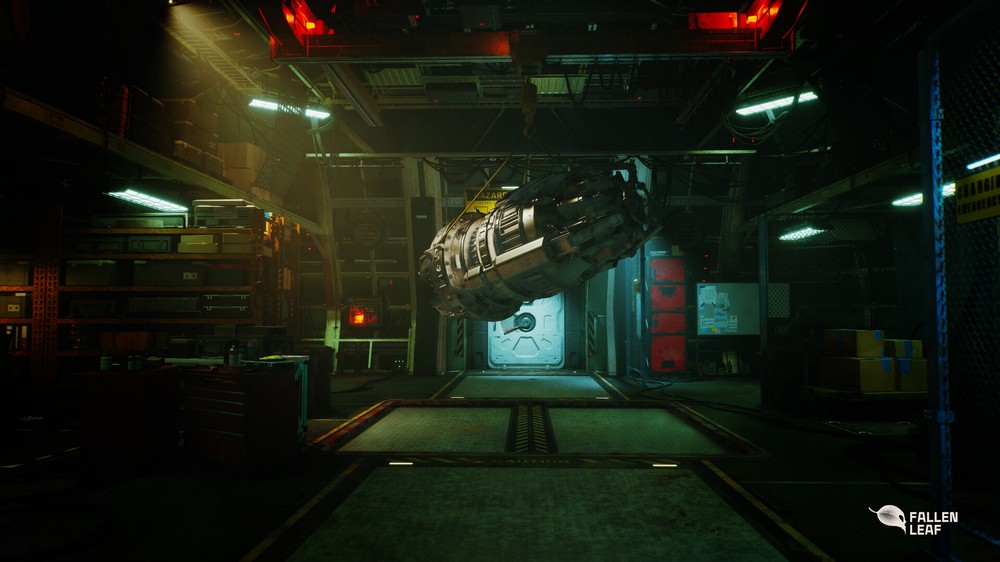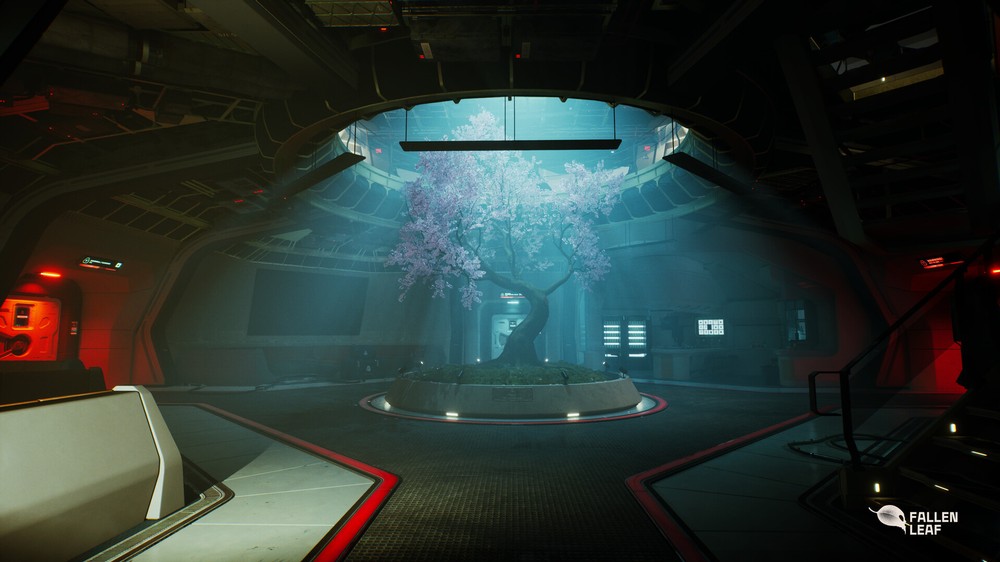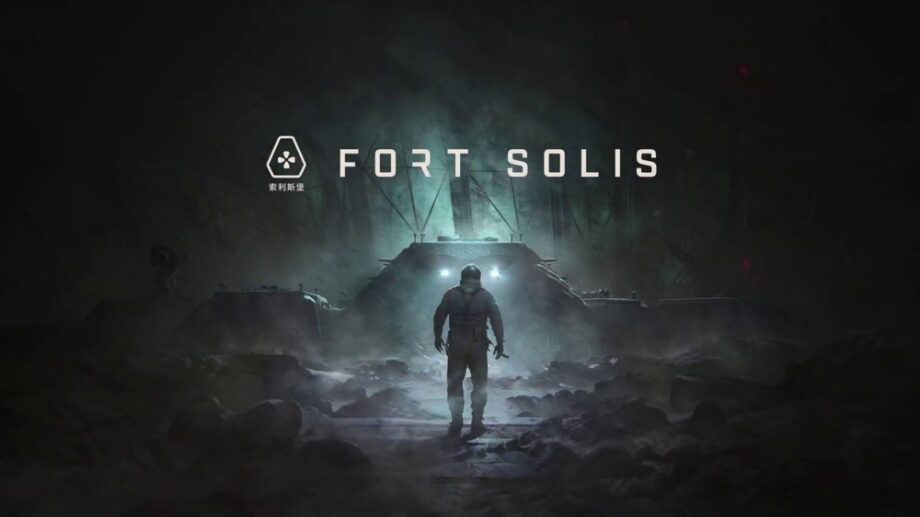Looking at Fort Solis, the debut collaboration from Fallen Leaf Studio and Black Drakkar Games, you’d be forgiven for thinking you were about to shoot and punch your way through hordes of aliens on Mars. There’s a look to it that screams Deadspace or Callisto Protocol, but I’d argue it lines itself closer to the likes of Gone Home or Firewatch. A story-driven thriller, Fort Solis is backed by a star-studded voice cast, great looking visuals, and a central mystery that explores some interesting themes. While it achieves some highs in those respects, its lowest lows in the form of performance issues, pacing (both literally and narratively), and short length keep Fort Solis from ever really leaving the ground.
Fort Solis follows space engineer Jack Leary as he answers a distress call from the titular base. Upon arriving, Jack finds the base empty and sets out to discover what has happened to its crew. In his ear is fellow engineer and co-worker, Jessica Appleton, voiced by Julia Brown in her video game voiceover debut. Jack is voiced by Roger Clark, of Red Dead Redemption 2 fame. The voice acting is top notch. Clark and Brown sell their characters’ chemistry, immediately. Jack and Jessica sound like they’ve been working together for years. They joke back-and-forth throughout the campaign, even in the most stressful of moments. These are co-workers who are comfortable with one another and who are trying to keep each other calm in this dire situation. Of the main cast there’s no weak link here. Troy Baker voices a character that appears early on in the game. He chews the scenery in every scene he’s in, with a heated exchange through a bay window, being his standout moment. Brown also isn’t pulling any punches. When not playing the comic relief, there are moments of Jessica’s self-talk and anxiousness that really grabbed me.

There is no combat in Fort Solis. Well, there is no fun combat in Fort Solis. Anything that resembles any kind of combat or obstacle, is played out in quick time events (which you can’t fail). I know a lot of eyes just glazed over. I personally think QTE is okay, when it’s used in slower moments. The problem is everything here is a slower moment. In space no one has running shoes or a real sense of urgency. Once the mystery starts to ramp up and the body count increases nothing really changes. You’re just along for your Sunday stroll in the Mars murder mine. Jack runs one time throughout the entire three-hour campaign. The devs have spoken on the movement speed and how it’s mainly there for players to get through full sections of dialogue. That’s fine, but you’ve built this living space mine with all these interesting details. Let players sprint, but trust they’ll get distracted by the poker game in the rec room or the content on someone’s whiteboard in their room.
During your investigation of the base, you’ll find audio logs, video recordings, and emails that shed some light for you. This is one of the most interesting aspects of Fort Solis. You’re discovering a lot about these crew members in these little interactions they have with one another, and how those interactions differ on the clock compared to after they punch out. The strongest throughline in the entire narrative is working relationships. Jack and Jessica are an example of a somewhat healthy relationship between co-workers. Shift things over to the Fort Solis crew and you start to see how red tape doesn’t stop when the workday ends.

I ate up these moments throughout the game. I got excited any time I saw a personal terminal and knew there’d be a few more nuggets of information about the drill crew or the going ons of the greenhouse coming my way. The rest of the cast does well here in audio and video recordings. For the most part these all feel like someone actually sitting down to record their thoughts and not a character in a video game delivering their lines.
Exploration in the Fort Solis base is mostly linear. Most locked doors have a number on them signifying the level of clearance you need to enter that area. The base does feel well lived in, so you won’t see too much of the same as you enter a new area, in fact the diversity of each area really keeps things going once you get to the middle chapters of the game. There is a weird pacing issue I had around chapter three and four that’s the result of some backtracking you have to do. It’s not the worst thing, but it is noticeable in a campaign that’s already short as it is.

UI wise, you have a wristwatch where you can access the base’s map and review all previous media you’ve collected. Depending where you are when you open the map, there may be a glare on the screen, due to the lighting. It’s a cool little detail, but it wears out its welcome after having to un-pause, move, and then pause again to fully see your map multiple times. The map is also clunky and not the easiest thing to read. The game also doesn’t provide waypoints and counts on players to find their way about. It’s tricky early on, but once you’ve got a lay of the base, you shouldn’t find yourself using the map too much.
Even with my PC specs at or above the requirements to run Fort Solis, I did find myself losing frames and suffering from some stutters in the lighting. There would be mild episodes of this, the most notable times being any time I was going up or down a set of stairs, specifically in the main stairwell. I was lucky enough to avoid any crashes though in my short playthrough. When the game isn’t tripping over itself, it is damn beautiful. The stormy surface of Mars is breathtaking as you ride across it in the opening sequence. The base screams hard sci-fi and makes me want to take in every little detail as I explore the mess hall, the crew’s messy living quarters, and the vast gardens in the greenhouse. Characters also look great. I found myself on more than one occasion looking for that perfect spot to capture a screenshot of Jack. The game knows it’s beautiful, evident by the inclusion of a camera mode. This is the most eye-catching game I’ve played since Callisto Protocall.

As the mystery draws to a close, the game doesn’t quite land the ending. The twists and turns along the way were great, but the end just feels rushed. It also doesn’t help that the climatic encounter in the end plays out in QTE’s, some of which are just hitting the button to hide. It’s a weird moment that feels like it was tacked on at the last minute. Fort Solis is a mystery to me. It’s a beautiful game with well-developed characters, and fascinating themes it wants to explore. Yet, the things it does well are eclipsed by performance and pacing issues. I can’t help but think with some time under the hood this could be a classic narrative sci-fi thriller. In its current state I can’t recommend it.











